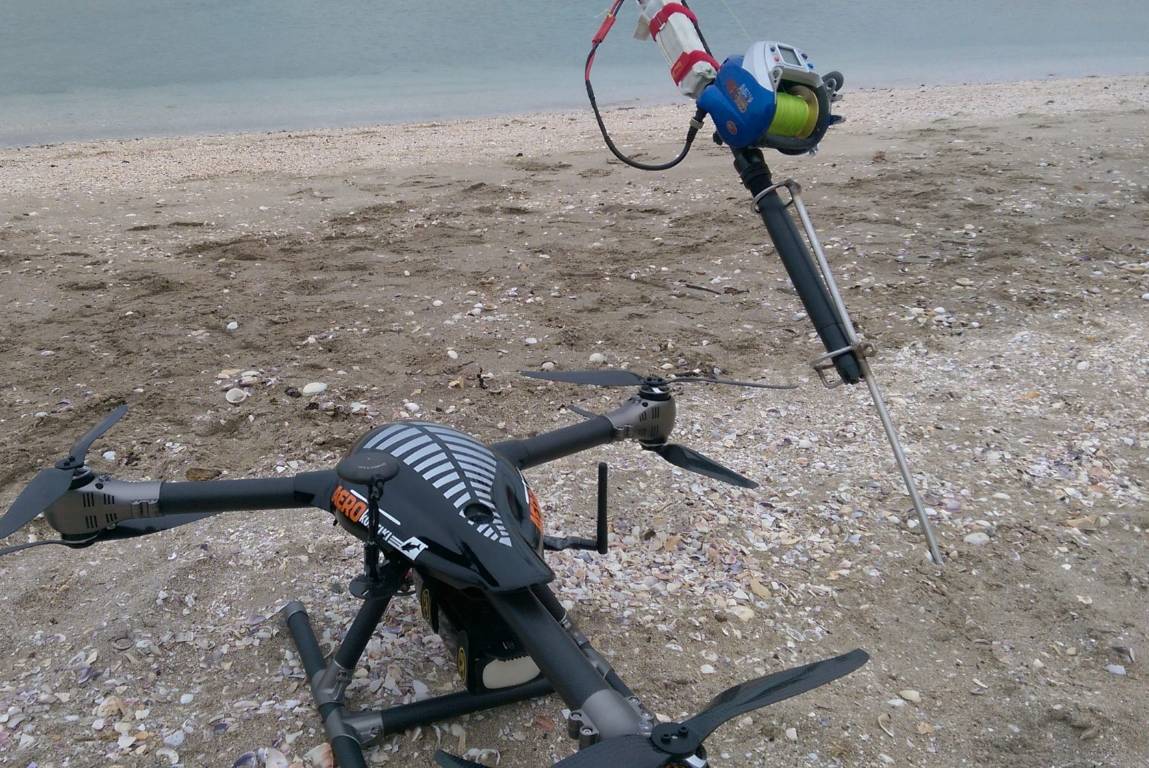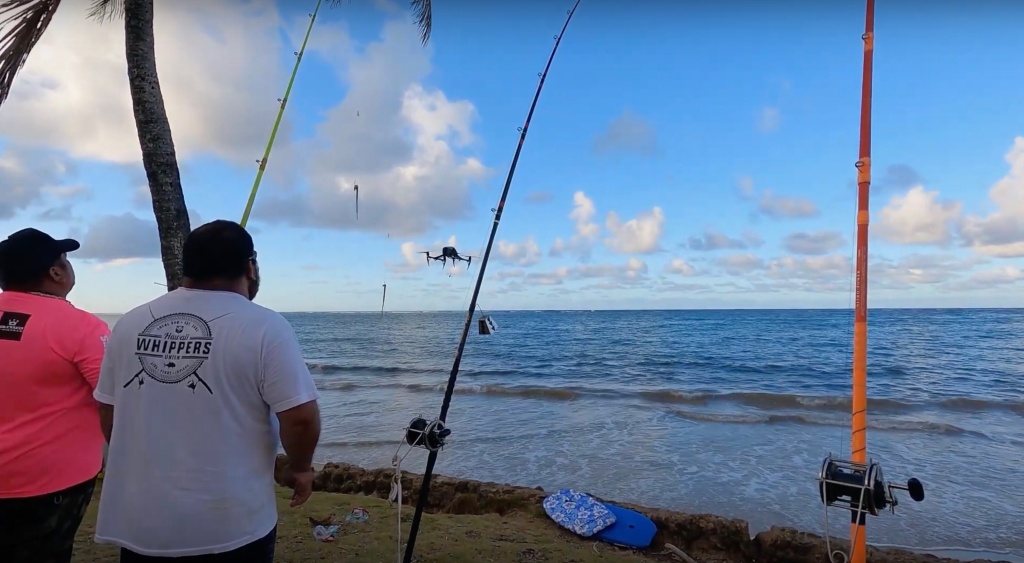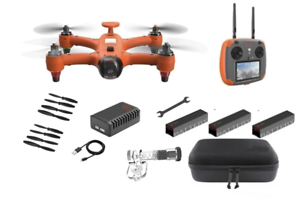
New Zealand has a new style of fishing: drone fishing. This new method uses the most recent drone technology, opening up new possibilities for fishing. Drone Fishing NZ, a top retailer, offers the DJI and Splash drones for purchase. Splash drones, GoFish and custom-built fishing rods are also available.
Aerokontiki Drones
Sharkan offers a Fishhawk, a fishing drone that captures the action better. The drone's stabilized camera can shoot 12-megapixel photos at 30 frames per second and 4k UHD video at 12MP. You can even view the videos directly on your smartphone. The drone offers a range of good transmission and flight time, as well as a spare batteries that can be charged.
Mobula
Mobula's drone was specifically made for fishing. It is buoyant and IP56-rated. This means that it can withstand wind speeds up to 20 knots. It also includes safety features such an automatic return home, automatic release of payload, and three release methods. In addition, you'll never have to worry about losing your drone because it will return to the water automatically if its battery runs out.
Banks'
The popularity of fishing drones has increased, drawing the attention of anglers as much as those who are interested in it. However, using a drone comes with its own set problems. The drone is not recommended for fishing in shallow water. If a drone crashes in the exact same place again, it can pose a problem. You can't always rely on the information in the video if that happens.

SplashDrone 4
Swellpro created the SplashDrone 4 waterproof drone with a new floating platform. It's built for fishing parties and all types of water activities, and the drone is made of corrosion-resistant materials and industrial-grade ABS to withstand even the toughest conditions. Smooth+ is the SplashDrone 4’s exclusive flight control system. This gives the user full control over the drone and keeps it stable in any environment. Its advanced technology makes it possible to capture every angle, every moment from the air.
Drone for fishermen
New Zealand Fisherman Drone Fishermans, you are in for a surprise. Snapper is a sought-after species for drone fishermen. Snapper are also beautiful and delicious to catch. These fish can often be found off the coasts on the North or South islands. They are most common during their spring spawning season, which is when large numbers of them congregate. These fish can be caught in the summer, but they are also plentiful in the fall.
Flying a drone
There are a few things you can do to make your drone fishing trip in New Zealand a success. The law is the first thing you need to know. It's against the law to fly a drone above any marine life or within 500m of a marine mammal. You'll also need to be mindful of your surroundings when flying your drone, as you don't want your expensive drone confiscated or damaged.
Payload of a drone
The payload of a drone that you use for fishing is something you should be aware. You need a drone that is strong enough to lift heavy fish and long-lasting flight. If your drone is only used for a short time, it will not catch enough fish to be worthwhile. The technology behind drone fishing in New Zealand has improved.

FAQ
What US states have drones made legal?
You can legally operate a drone for hobby purposes. Federal Aviation Administration (FAA), has issued guidelines that allow you to use small unmanned aircraft systems (UASs). These UASs have to be registered with FAA before they are allowed to fly. If certain conditions are met the FAA will allow commercial operators to fly these drones.
Can I fly my drone around my area?
Yes! These are also known as UAVs (unmanned aerial vehicle). There are several types of drones available for sale today, from small quadcopters to large fixed-wing aircraft. The FAA recently published new rules on commercial UAV usage, which allows you to legally fly them for commercial purposes. Be aware that UAVs operating near airports could cause interference to air traffic control systems. You must get permission from the authorities before you can fly one.
Are drones permitted at public events?
As long as you comply with the rules, drones can be flown anywhere. However, if you plan to fly your drone during a public event such as a parade, festival, or concert, you will need approval from the event organizers.
Statistics
- According to industry research from ZipRecruiter , there are 10 cities where the typical salary for a Drone Pilot job is above the national average. (dronesgator.com)
- According to Indeed, a drone pilot gets paid $25.73 per hour on average in the US. (dronesgator.com)
- According to ZipRecruiter, the minimum hourly wage of drone pilots is $20. (thedroneu.com)
External Links
How To
How to Fly Drones for Beginners
A drone is a remote-controlled aircraft used for aerial photography, cinematography, surveillance, scientific research, and hobby purposes. Drone technology has existed since World War II. However, commercial use began in 2010 when DJI released their Phantom series of quadcopters. Many types of drones have been made available since then, from beginner-friendly models such as the Parrot AR Drone 2.0, to high-end multi-rotor craft such as the DJI Mavic Pro.
There are several ways to fly a drone, including;
-
Remote control - This allows you to control the drone from your hand. There are two main types for controllers: Joysticks or On/Off switches, which can be used to control the drone's flight path.
-
Manual Control – This allows remote operation of the drone via GPS coordinates using a smartphone application. Follow the instructions of the app to track the exact location you want the drone go.
-
Autonomous Flight – This is when the drone handles all the piloting tasks. The drone is able to fly autonomously, without the need for human intervention. A drone must have a builtin camera and sensors capable to capture images and other data.
-
Triggered Flight - This method is similar to manual control, except the pilot manually sets up a preprogrammed route, and the drone follows that route until it reaches the endpoint. Once the programmed route has been completed, the drone returns to the base automatically.
-
Landing Gear - Some drones come equipped with landing gear that allows them to land safely if they lose power or run out of battery during flight.
-
Goggles - Pilots may wear goggles to shield themselves from flying debris.
-
Camera - Some drones can be equipped with cameras which enable you to capture photos from the sky.
-
Obstacles: Some drones are equipped with obstacle avoidance systems to prevent them from hitting obstacles.
-
Speed - Some drones can travel at speeds over 40 mph.
-
Battery Life – Most drones will last 20 minutes to three hours depending on how powerful they are.
-
Distance - Some drones can travel up 30 miles depending on the model.
-
Power source – Some drones require external power sources, others require internal batteries.
-
Weight - Some drones are lighter than others, while some models can weigh as much as 4 pounds.
-
Size - Drones range from small devices that fit in one's palm to large crafts that weigh more than 50 pounds.
-
Price - From high-end models that cost thousands of dollars to low-cost options that start at $100, all drones fall under a certain price category.